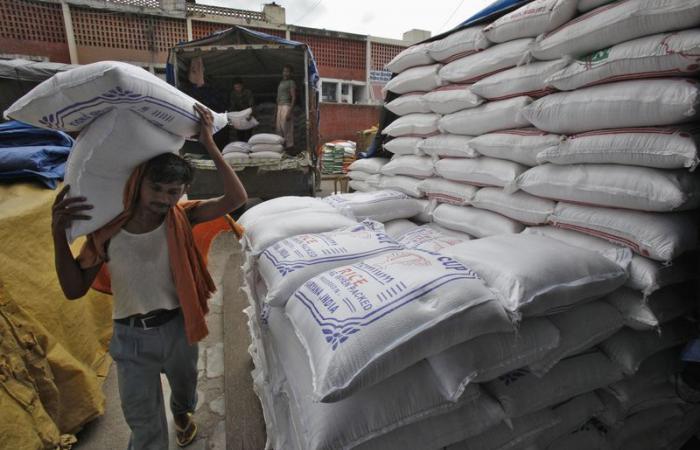India’s food inflation, driven by supply-side factors such as unfavorable crop weather conditions, has remained at around 8% year-on-year since November 2023 and is not expected to ease anytime soon, despite the early arrival of monsoon rains and forecasts of above-normal precipitation.
High food prices, which account for almost half of the overall consumer price basket, have kept headline inflation above the central bank’s 4% target, preventing it from reduce interest rates.
WHAT IS DRIVING FOOD INFLATION SOAR?
Last year’s drought and the current heatwave have significantly reduced the supply of food products such as pulses, vegetables and cereals.
Measures to restrict food exports and reduce customs duties on imports have had little effect.
Although the supply of vegetables typically decreases during the summer months, this year’s decline is much more pronounced. In almost half the country, temperatures are 4 to 9 degrees Celsius above normal, damaging harvested and stored vegetables and hampering the planting of crops such as onions, tomatoes, eggplant and spinach.
Farmers usually prepare vegetable seedlings before the monsoon rains from June to September and then transplant them into the main fields. However, this year, excessive heat and lack of water disrupted the planting and replanting of seedlings, further worsening the vegetable shortage.
WHY DIDN’T THE MONSOON HELP?
The annual monsoon, on which India’s agricultural production depends, arrived early in the country’s south and progressed quickly to cover the western state of Maharashtra ahead of schedule. However, this initial momentum quickly faded, resulting in a rainfall deficit of 18% since the start of the season.
In addition to triggering the heat wave, the weakening of the monsoon delayed the planting of summer crops, which can only be done at full speed if there is sufficient rainfall.
Despite June’s erratic rains, the Indian Meteorological Office is forecasting above-average rainfall for the rest of the monsoon season.
WHEN WILL PRICES DROP?
Vegetable prices are expected to decline from August if the monsoon recovers and covers the entire country as per the usual schedule. However, flooding or a prolonged dry spell in July and August could disrupt the production cycle.
Prices of milk, cereals and pulses are unlikely to fall quickly due to insufficient supply. Wheat reserves are dwindling and the government has announced that it does not plan to import grain, allowing wheat prices to rise further.
Rice prices may rise as the government on Wednesday raised the minimum support price, or procurement price, for paddy rice by 5.4%. Supplies of legumes, such as pigeon peas, maté noir and chickpeas, were badly affected by last year’s drought and will not improve until the new season’s crops are harvested .
Sugar prices are expected to remain high as next season’s production is expected to decline due to lower plantings.
CAN GOVERNMENT INTERVENTION HELP?
Yes, government interventions such as restricting exports and easing imports can help lower the prices of certain food items. However, there is little the government can do about the prices of vegetables, which are highly perishable and difficult to import.
The government has implemented various measures to lower food prices by limiting exports of sugar, rice, onions and wheat. However, these measures proved unpopular among farmers and led to general election losses for the ruling Bharatiya Janata Party in rural areas.
State elections are approaching in Maharashtra and Haryana, where a large population of farmers will decide the outcome. The central government has been trying to win back farmers’ support and may let prices of some crops rise instead of taking aggressive action ahead of elections, which are due to take place in October.






